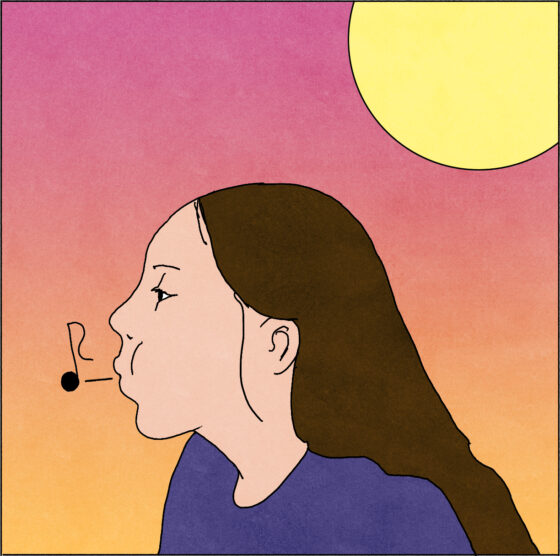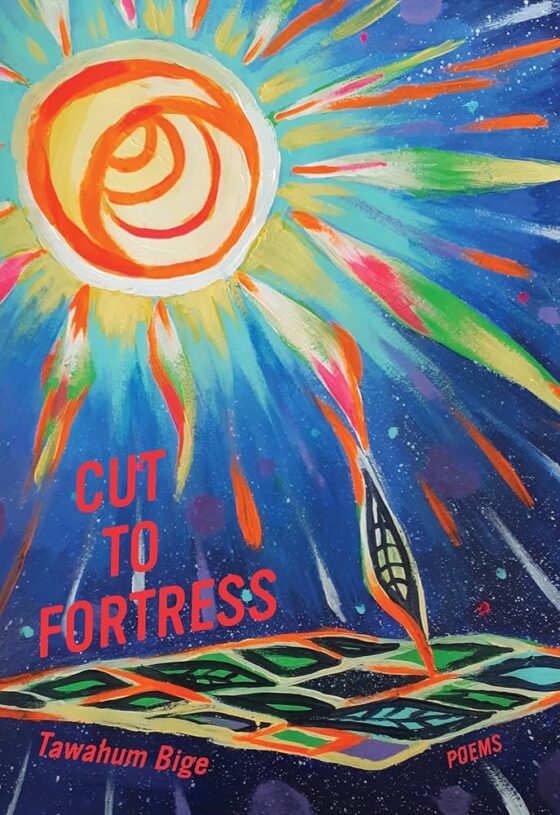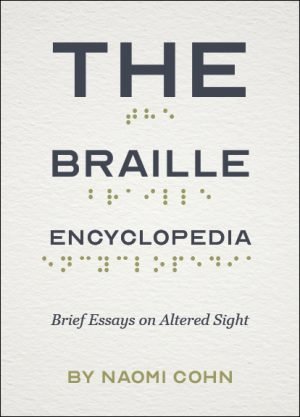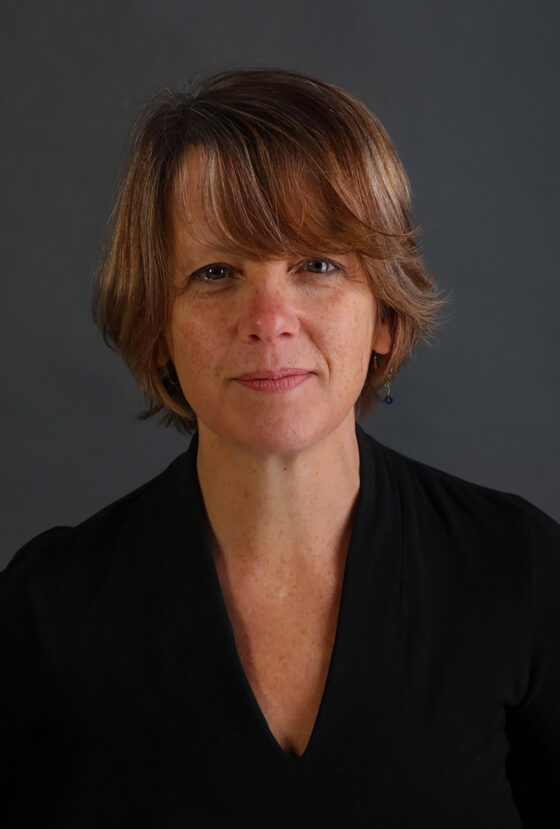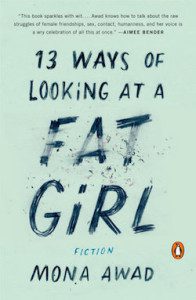
A friend posted a picture of me from her wedding, and all I can see is my stomach. I’m with friends, wearing goofy hats for the photo booth, having fun, but I don’t care. Something about the way my body is contorted, or how that slinky polyester is the most unforgiving, or how the waistband of my nylons cut across my middle, but there it is: the bright blue fabric rippling like thick waves over the uneven surface of my bulging gut––an oozing, distorted potato.
Wow, I think. You’re fat.
Mona Awad’s fiction debut 13 Ways of Looking at a Fat Girl is a novel in thirteen vignettes about the experience of being a woman dealing with body image issues or simply put: The experience of being a woman. At the time I saw that wedding photo of myself, there were probably thousands of women online at the same time, also looking at photos of themselves, also thinking the same thing––no matter what those women actually weigh.
Awad tells the story of one woman––who goes by Lizzie at first, then later Beth, then later Elizabeth, then later Liz––and her struggles over the course of her life with her weight. Right away Awad sets up the intense, pressurized world of her novel, which is packed with brand names, movie stars, and pop culture references. These are the things society wants women to care about. These are the things society values. These are the ways that women should measure themselves. We meet Lizzie as a heavy teenager, full of angst and jealousy over her thin, fashionable friends with jagged elbows and angled features: “I do what I’m trying not to do, which is dream myself into her clothes buckle by buckle, zip by zip, and then into her skin. Until I am her limbs and her long curving back, Steppenwolf branded on my knobby spine. Until I am her lips and her sharply cut cheeks and her eyes clouded in their glittering gray smoke.”
This coming-of-age part of the story is brutal––the feeling of being out of place, of both craving attention and wanting to be invisible, of constantly comparing oneself to others. Even someone who has never struggled with her weight should be able to see her teenage self in Awad’s pages. But that out-of-place feeling in Lizzie’s adolescent years, set up so deftly by Awad, carries the entire plot. Lizzie doesn’t just feel out-of-place in the world; she feels out-of-place in her own skin. At one point Lizzie mentions that her favorite animal is a turtle, which makes sense: she seems like she wants to curl up inside of herself and hide most of the time.
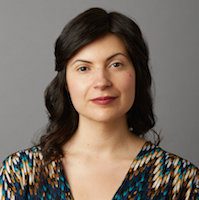
13 Ways follows Lizzie from her adolescence into her twenties and beyond, and as she changes her name to Beth to Elizabeth to Liz, her weight changes as well. Lizzie falls through the whole range of fat, heavy, obese, large, plump, curvy, thinner, thin, to skinny, and back again. Sometimes I wasn’t even sure of how fat or thin Lizzie was at the moment, because she was so uncertain of her own image, so critical of herself, that even when she might have been actually thin, it was hard to see. Awad is careful never to mention a number on a scale, because “fat” and “thin” are subjective terms. Every person has their own numbers that qualify those words. But for as unhappy as Lizzie is when she considers herself fat, even when she finally finds that elusive, always-striving-after thin, she is just as, if not more, miserable. Awad writes powerfully about the all-consuming nature of weight loss and body image. Lizzie becomes obsessive––measuring out two-ounce glasses of white wine, eating only four ounces of fish along with boiled grains and sprouts, allowing “her evening ritual, a square of dark chocolate from a bar she keeps at the back of the cupboard like an alcoholic’s hidden stash of gin.” And while you want to be happy for Lizzie––she got what a fat girl is supposed to want, right? To be skinny?––instead, you want to cry. Trying to be and stay thin has become her entire identity. Self-hate was Lizzie’s motivation to lose weight in the first place, and as Lizzie becomes smaller, self-hate consumes her, destroys her, and damages her relationships with others. Besides, she’s too busy counting calories to do anything else––to listen to music, to cook, to have sex. She is too tired, too hungry, and too angry.
Much of 13 Ways is about the men in Lizzie’s life. As Lizzie craves acceptance and love, she looks to men for attention. There are the men she finds online, to whom she is afraid to send full-body photographs because she doesn’t want to reveal her weight. There are predatory older men who take advantage of Lizzie’s insecurities. There are stoned, douchebag musicians with skinny girlfriends, who use Lizzie on the side for support, encouragement, and an endless supply of snacks. There are the men who judge her, who fetishize her, who antagonize her, who love her in spite of her weight, who love her because of her weight. There is Lizzie’s own father who looks at her with disgust, as he “always felt that being fat was a choice.” The thirteen vignettes are told from both Lizzie’s point of view, looking in at herself, and the point of view of these men, looking back at Lizzie.
13 Ways is difficult to read. Awad hits so many nerves––my stomach turned every time Lizzie tries on clothes in a dressing room. I hate dressing rooms: the unflattering fluorescent, the static charge from cloth rubbing against hair, being naked and vulnerable in a public place, clean socks on a dirty floor, but, most of all, the disgust I feel with my body when nothing fits. It’s an almost universal experience for women and Awad writes the scenes so that my heart surged every time Lizzie stepped into one of those small rooms.
Yet, it is when Lizzie is thin that the book becomes truly painful to read, because Lizzie’s hurt is so tangible. Her hunger is palpable to the point that I found myself starving with her. The gnawing in my stomach would become so intense while I was reading, that I would frequently put down the book to get up and make myself food.
There are many more than thirteen ways of looking at a fat girl in Awad’s book. It’s not just Lizzie. There are so many fat girls in 13 Ways: there is the fat girl who was skinny as a teenager but becomes fat as an adult, there is the fat girl who is the fat mother of a fat girl, there is the fat girl who sits on the exercise bike every day but it makes no difference, there is the fat girl who is happily fat and works as a manicurist, the fat girl who is a skinny girl who thinks she is fat because she loves to eat so much, the fat girl who thinks at least I’m not as fat as that other fat girl. There are so many fat girls, because it seems that every woman is a fat girl, in some form or another: a former fat girl, a currently fat girl, a future fat girl, or a fat girl on the inside. But 13 Ways of Looking at a Fat Girl is just as much about fatness and body image, as it is about the harsh judgment that women cast on each other and on themselves. Everyone sees everyone else through her own insecurities.

